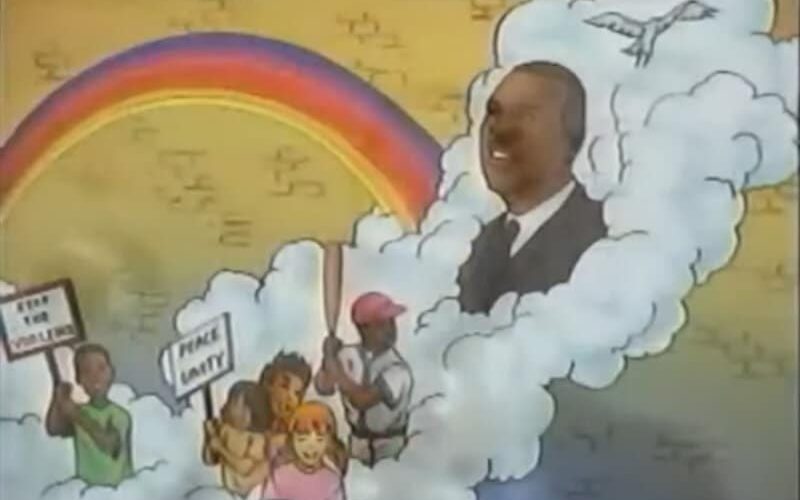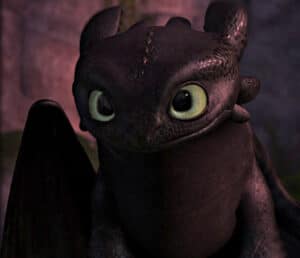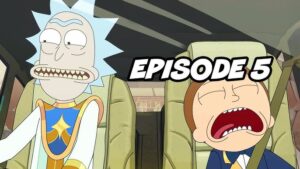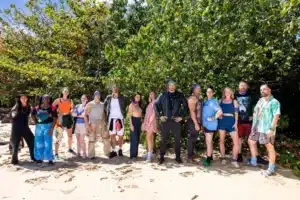January 20th is the US national holiday to honor and celebrate the achievements of Reverend Martin Luther King, Jr. who led the Civil Rights Movement to push for social change in the US. Throughout his lifespan, he and his followers fought for the end of segregation and equal rights. But what would have happened if King had not taken the chance to address the ongoing mistreatment of racial segregation? Enter Our Friend Martin, the 1998 direct-to-video children’s edutainment film.
A Time-Traveling Adventure
Our Friend Martin begins with the conclusion of our protagonist Miles with a young Martin Luther King. They appeared in the dark version of Atlanta, Georgia. Miles then tries to stop King from entering a house. The scene then transitions to Miles’ home, getting ready for school. He receives his permission slip to visit The Birth Home of Martin Luther King. We get a glimpse of Miles’ daily life when he gets chased by the bully Kyle, loves baseball, and is considered a slacker.
His history teacher, Mrs. Clark assigned their museum groups leaving him with his best friend, Randy, classmate crush Maria, and Kyle. She later had a private discussion with Miles, warning him he would repeat 6th grade if he doesn’t improve his studies. His attitude later changes when he and Randy encounter King’s bedroom. The museum curator, Mrs. Peck noticed Miles wanted to sneak in for she mentioned the room is magical. The boys learned that anything they touch leads them to the minister’s past.
From there, they traveled through his life, learning about racial segregation and the obstacles it took to end it. Maria and Kyle soon learned about Miles and Randy’s time-traveling secret during a history lesson. There was visible footage of them after John F. Kennedy freed King from prison on Oct. 27th, 1960. The kids later discovered that winding King’s wristwatch gives objects interactive time travel. Kyle and Miles learned to set their differences aside when they participated in the March to Washington.
However, Miles and Randy soon learned about King’s assassination. They became determined to rescue him from the past to prevent his death. Returning present-day 1998 with young King made Miles experience segregation, inequality, and racism. In the end, he understood that his work was not made and needed to return to repair time. Miles, Randy, Maria, and Kyle painted a mural of him in honor of his memory.
Our Friend Martin’s Presentation
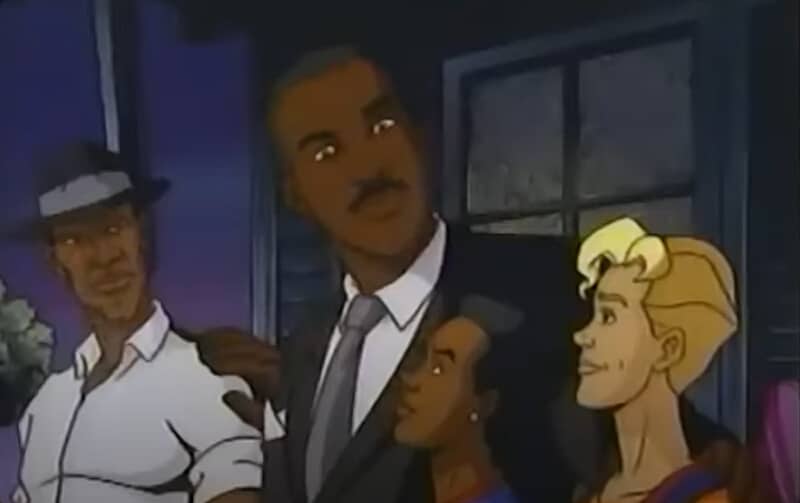
Using Miles as the Audience
Animation studios, DIC Entertainment, and Industrial Pixel Magic (IPM) did an excellent job of reanimating King’s life. We learn through Miles’ perspective as he learns the importance of his work that guides modern-day American socialism. By using baseball, it helps the protagonist relate to King’s younger self. With each time skip the young 6th grader experiences the hardships of segregation, racism, and inequality.
We visibly see and hear how Miles’ attitude changes in how he approaches his future. During the discussion with Mrs. Clark, he told her, “When you’re living in color, sports and entertainment are the only sure bets for making the big time.” She jokingly mentions General Colin Powell, the first black chairman of the Joint Chief of Staff. Then after King restored present-day 1998, Miles says, “I learned that everyone has the power to make the world a better place.” He’s less cocky and will take his studies seriously to create a change.
Retelling Historical Events
The events to retell King’s life are not fully animated but having a blend of live footage from the 1950s to 1960s gave Our Friend Martin surrealism. It showed children segregated America its cruelty and unfair laws. For example, when Miles and Randy arrived in 1944 on a segregated train, they were upset that whites and colored people could not sit together. Then in 1956, King informed the boys about Rosa Parks’ arrest after refusing to give her seat up to a white man. Randy exclaimed, “That’s the law?”
Our Friend Martin has made two recreations that left watchers stunned. The House Bombing is such an influential scene as children get to see the damage that racism implies. King’s friend, Albert Turner did not take the bombing well. He tried to agitate the neighborhood into committing violence. Miles and Randy witness King calming them down. He speaks of how Mahatma Gandhi peacefully protested and drove British colonialists away from India. And finally, he relays the message, “We must meet hate with love.”
Following after is the 1963 Birmingham Riot. By intertwining the animation and live footage with the audio of Bull Connor, the scene sends terror. IPM’s VFX editing of the footage in the police shades made the animation feel more alive. The transition cuts are well-done for 1998 as each brutality was executed on screen. You can hear it in Miles’ voice when he witnessed black children getting hosed by a firefighter.
Having An Alternate Timeline
Dawn Comer and Chris Simmons made the right call to write a “No Martin Luther King” timeline. It was caused by Miles avoiding Mrs. Peck’s warning of changing history. On the other hand, she expected him to after revealing she’s a timekeeper. The No MLK timeline educated children with a what-if scenario. We see how it changes interactions between the characters, especially how characters are treated.
Mrs. Clark was seen as stupid for not kicking Miles and King out of her classroom. Randy and Kyle grew bitter towards them for their race. Maria couldn’t speak English and became an enslaved school janitor. And what hurt Miles the most was seeing his mom as an underpaid maid. King’s realization made it satisfying to watch. He couldn’t shake the feeling that he had a role to fulfill for the better. While we don’t see his assassination, the sound of the bullet is enough to know what happened.
The Voices of MLK
Martin Luther King, Jr. was portrayed by 4 actors. Playing his 12-year-old voice is Theodore Borders who’s known as Miles Vaughn from Flash Forward. At 15, Jaleel White was honored to voice the revolutionary reverend in the train scene. Up next is LeVar Burton of Reading Rainbow and Star Trek fame voicing him at age 26. And finally, voicing King at 34 is the late Dexter Scott King. He would soon find himself in the role again for The Rosa Parks Story in 2002.
Our Friend Martin Serves A Purpose
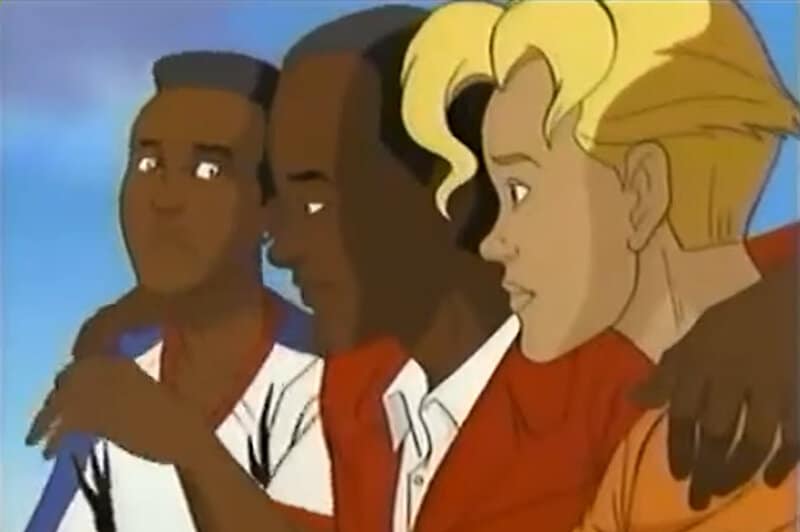
I first experienced Our Friend Martin back in 2011. I was in 7th grade and the reading comprehension teacher let this play before the MLK weekend arrived. Rewatching it again made me realize how King’s actions changed the States for be better. But now, fighting hate with love is scarce in this country.
The film still serves its educational purpose of understanding how inequality and racism affect our social instincts. I am happy to see people from my era still remember Our Friend Martin for the historical lessons it taught. It’s unknown if it’s still played in schools whenever MLK weekend rolls around. If it isn’t, it could be due to the film’s dialogue of using the Spanish word ‘negro’ to describe African Americans in the past. For the teachers who care to preserve history, I highly recommend Our Friend Martin as a teaching tool.

